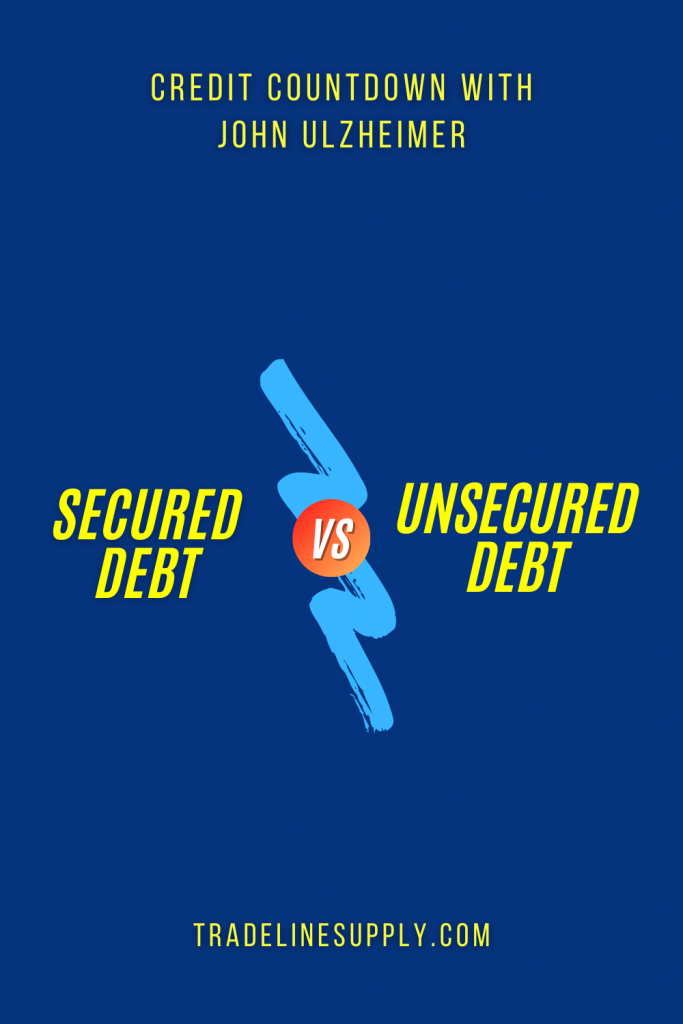Reasons Why You May Not Have a Credit Score – Credit Countdown

If you do not have a credit score, credit expert John Ulzheimer explained why this may be the case in a recent Credit Countdown video on the TradelineSupply Company, LLC YouTube channel. Keep reading for the text version or scroll to the bottom of this article to see the video.
What Are the Minimum Credit Scoring Criteria?
In order to be able to generate a credit score, your credit report has to meet certain requirements. These requirements are slightly different depending on whether the credit scoring model being used is a FICO score or a VantageScore.
FICO Score Minimum Credit Scoring Criteria
You must have at least one undisputed tradeline.
A tradeline is an account on your credit report. This may include credit cards, lines of credit, installment loans, etc. (Other items on your credit report that are not accounts and therefore are not considered tradelines include collections, judgments, tax liens, bankruptcies, and inquiries.)
In order to be included by credit scoring models, the tradeline cannot be disputed.
The undisputed tradeline must be at least six months old.
At least six months of credit history are needed in order to accurately predict your likelihood of defaulting in the future, which is what credit scores are designed to do. Trying to come up with a credit score using fewer data points might cause the score to be less predictive of your actual credit risk, which could create problems for lenders.
You must have recent activity on your credit report (within the past six months).
To meet this requirement, you must have at least one undisputed tradeline that has been updated within the past six months. Don’t worry, this can be the same tradeline that qualifies you for the prior two criteria as long as it has reported activity within the past six months, or it can be a different account.
You cannot be listed as “deceased” on your credit report.
Credit scores cannot be created for individuals who are deceased (or appear to be deceased due to an error).
If your credit profile satisfies these criteria, then you will be able to qualify for any FICO score regardless of which generation it may be.
VantageScore Minimum Credit Scoring Criteria
Compared to FICO scores, the VantageScore credit scoring models have less stringent requirements on who can qualify for a credit score.
You cannot be listed as “deceased” on your credit report.
Like FICO scores, VantageScores also do not calculate credit scores for deceased consumers.
You should have at least one or two months of credit history with any credit bureau.
According to MoneyCrashers.com, “the VantageScore model typically produces scores for consumers with one to two months of credit history, regardless of which bureau reports that activity.” The account or accounts do not need to have six months of age in order to be scored.
The company claims that the VantageScore 4.0 and 3.0 models can provide credit scores to 40 million consumers who cannot be scored using other types of credit scoring models since it is easier for consumers with limited information in their credit files to meet the minimum scoring criteria.
What the Lender Sees When You Do Not Have a Credit Score
If a lender tries to pull your credit score and you do not have one for any of the above reasons, they will instead receive what is known as a “reject code” or a “failure code.”
This reject code indicates to the lender that you have failed to meet the minimum credit scoring criteria and which criteria you did not satisfy.
Watch the video on this topic featuring seasoned credit professional John Ulzheimer below, or go to our YouTube channel to subscribe and see more credit-related videos!
Read more: tradelinesupply.com

 In
In  Being an authorized user on someone else’s credit card can often be a valuable strategy for consumers who are looking to
Being an authorized user on someone else’s credit card can often be a valuable strategy for consumers who are looking to  Secured credit and unsecured credit are types of credit that are very different in terms of risk to consumers and lenders.
Secured credit and unsecured credit are types of credit that are very different in terms of risk to consumers and lenders.